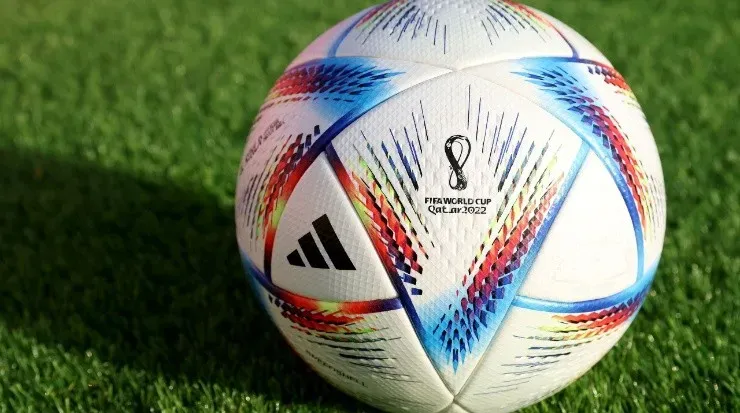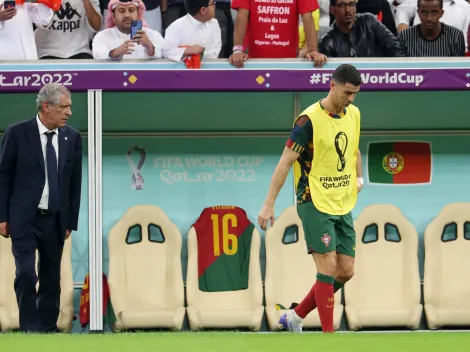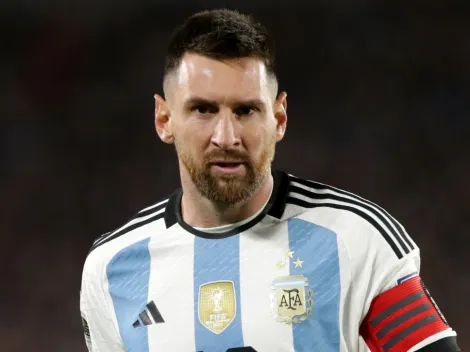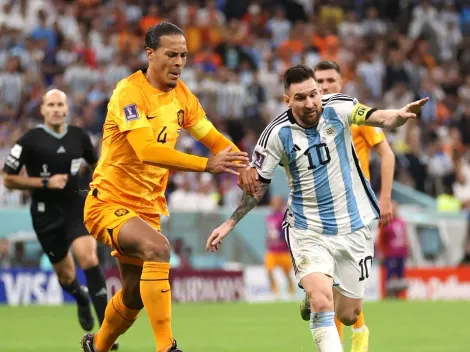When a new edition of the FIFA World Cup is announced, attention is immediately focused on the host country and the teams that will compete, but there is one element without which nothing would be possible. Absolutely nothing: the ball.
Soccer has evolved and is not the same as before. Its rules, the game systems used by the teams, the physical preparation of the players and even the way of dispensing justice with the Video Assistant Referee. Likewise, the great protagonist of the game itself, the ball, is not what it used to be.
At least during the 92-year history of the FIFA World Cup, the ball with which the matches have been played and the most fantastic stories of this tournament have been written has undergone modifications that have made it much more agile and suitable for players to give their best on the field. Meet the balls of the 21 editions that have been played and Al Rihla, the great protagonist of Qatar 2022.
The official matchballs of the FIFA World Cups
With its history dating back to 1930, the FIFA World Cup has been held for 21 editions so far. In its 92-year history, it has brought joy to the whole world with the vibrant battles that have been fought on its fields. It is worth mentioning that only the Second World War has been able to stop its celebration, in 1942 and 1946.
Thus, Al Rihla of Qatar 2022 will join a select list of matchballs that will be remembered around the world forever. Along with Brazil, which is the National Team that has been able to win the FIFA World Cup the most times, the ball has been the only one that has always been in each of the editions of this tournament.
It should be noted that FIFA establishes in its guidelines that the balls for all matches sanctioned by FIFA must meet certain requirements and specifications: circumference of 69 to 71 centimeters, weight of between 400 and 450 grams, diameter of 11 to 23 centimeters, radius of 11 to 11.5 centimeters, 8.5 to 15.6 PSI and with a pentagonal and hexagonal cover.
Uruguay 1930 – Tiento / T-Model
The pure romanticism of soccer. As happens in matches played between friends on any field or in any park in the world, in the first edition of the FIFA World Cup each team carried its own ball. These two models transcended since 45 minutes of the final between Uruguay and Argentina were played with each of them.

Uruguay 1930, FIFA World Cup. (Keystone/Getty Images)
Italy 1934 – Federale 102
The first official ball in the history of the FIFA World Cup. Made of leather with rectangular segments, it had a system that reduced the seams, something that did not happen with the Uruguay 1930 balls. It was manufactured by a private company, unrelated to the manufacture of sports equipment.

Italy 1934 Ball. Keystone-France/Gamma-Keystone via Getty Images)
France 1938 – Allen
The novelty of this ball for the third edition of the FIFA World Cup is that the animal bladder that used to be inside the balls was replaced by a valve to facilitate inflation. It was also made from rectangular wedges of leather.

FIFA World Cup France 1938 Ball. (Getty Images)
Brazil 1950 – Duplo T
Until then, the ball with the fewest seams in the history of the FIFA World Cup. It was characterized by innovation in its manufacture to make it lighter and more spherical. It was made of tanned leather and maintained the implementation of the internal valve to inflate it.

Brazil 1950 FIFA World Cup, Ball. (Keystone-France/Gamma-Keystone via Getty Images)
Switzerland 1954 – Swiss World Champion
Its orange color attracted a lot of attention, although it had many other innovations, such as the fact that it was the first ball with 18 panels. Its seams were moved to the inside to continue the new trend of not exposing them. It was made of T-shaped leather segments.

Switzerland 1954 FIFA World Cup Ball. (Christof Koepsel/Bongarts/Getty Images)
Sweden 1958 – Top Star
The democratization reached the balls, as this design made by the Swedish company Sydsvenska Läder was chosen among 102 designs that competed in the competition to be the 1958 World Cup ball. Two colors were available: brown and yellow and white, both made of leather with 24 panels. Each national team that participated in the tournament received 30 units.

FIFA World Cup Sweden 1958 Ball. (picture alliance via Getty Images)
Chile 1962 – Crack
It is said that several European teams boycotted this model and opted to use their own balls. It was manufactured by the Chilean company Custodio Zamora Honorato, had 18 panels and was distinguished by its refined regular spherical shape.

FIFA World Cup Chle 1962 Ball. (Gutberlet/picture alliance via Getty Images)
England 1966 – Challenge 4 star
The Football Association emulated what FIFA did in Sweden 1958 and chose the ball for England 1966 through a lottery that was won by the company that manufactured the tennis balls used in the legendary Wimbledon tournament. Made of leather with rectangular segments, it is speculated that this ball had 25 panels.

FIFA World Cup England 1966 Ball. (Federico Gambarini/picture alliance via Getty Images)
Mexico 1970 -Telstar
The German company Adidas began its formal relationship as a supplier of FIFA World Cup balls with this model. It had 32 hand-baked polygonal segments; its colors were black and white for easy viewing on television.

FIFA World Cup Mexico 1970 Ball. (ASA/picture alliance via Getty Images)
Germany 1974 – Telstar Durlast
This model was the first FIFA World Cup ball made of polyurethane. Like its predecessor, it contained 32 segments, which made it invulnerable to waterand wear-resistant. This ball implemented a change in the design and were the letters in black color and not in gold.

FIFA World Cup Germany 1974 Ball. (Daniel Karmann/picture alliance via Getty Images)
Argentina 1978 – Tango
The trend of 32 segments or panels was maintained. It is relatively similar to its predecessors but with the exception that 20 of its segments had a triad that created the illusion that the ball design contained 12 circles. It was much more resistant to water and its structure and weight were not altered by it.

FIFA World Cup Argentina 1978 Ball. (Daniel Karmann/picture alliance via Getty Images)
Spain 1982 – Tango España
The last ball in the history of the FIFA World Cup to use leather in its manufacture. This material was combined with polyurethane to increase its waterproofing and ithad a new and improved rubberized.It retained the 32-panel construction.

FIFA World Cup Spain 1982 Ball. (ASA/picture alliance via Getty Images)
Mexico 1986 – Azteca
In a frank homage to Mexico’s pre-Hispanic culture, this FIFA World Cup ball was the first to be made entirely of synthetic microfiber and entirely handmade. Its technology allowed it to further reduce the amount of water absorbed.

FIFA World Cup Mexico 1986 Ball. (Daniel Karmann/picture alliance via Getty Images)
Italy 1990 – Etrusco Unico
It had an inner layer of black polyurethane foam that made it, until then, the fastest ball in the FIFA World Cup. This also made it totally waterproof and more reactive to the impact of the players’ boots. It was adorned with three lion heads alternating with the 20 triads.

FIFA World Cup Italy 1990 Ball. (Daniel Karmann/picture alliance via Getty Images)
USA 1994 – Questra
Inspired by the aerospace tradition of the United States, this FIFA World Cup ball increased its speed thanks to an innovative structure featuring stability mesh, braided fibers and a layer of polyurethane foam covered by 5 different types of synthetic materials.

FIFA World Cup USA 1994 Ball. (ASA/picture alliance via Getty Images)
France 1998 – Tricolore
After several dozens with a fixed color pattern of black and white, blue appeared on the FIFA World Cup ball. It was no longer manufactured in Europe but in Asia. Among its innovations were its synthetic foam layer, which made it more durable, and its micro gas bubbles.

FIFA World Cup France 1998 Ball. (Peter Kneffel/picture alliance via Getty Images)
Korea-Japan 2002 – Fevernova
First ball in the history of the FIFA World Cup to include a triangular design. It has three layers of fabric that increased its accuracy. It also had a thin layer of synthetic foam rubber. Its roundness stood out, the greatest ever in the history of this tournament.

FIFA World Cup Korea-Japan 2002 Ball. (Clive Brunskill/Getty Images)
Germany 2006 – Teimgeist
No more gores and a completely smoother surface that favored the contact of the boots. Made with 14 sealed panels, no longer baked, which made it completely waterproof. It was the first FIFA World Cup ball to be personalized by printing the teams, the date and the stadium of the match in which it was used.

FIFA World Cup Germany 2006 Ball. (Daniel Karmann/picture alliance via Getty Images)
South Africa 2010 – Jabulani
Named by many as the worst ball not only in the history of the FIFA World Cup but in the history of soccer, due to its unpredictability and slipperiness. It had 8 sealed panels and a supercarbonate layer. It was adorned with 11 different colors in homage to the number of languages and communities in South Africa.

FIFA World Cup South Africa 2010 Ball. (Mike Hewitt – FIFA/FIFA via Getty Images)
Brazil 2014 – Brazuca
It presented the innovation of having an internal bladder again, but made of latex, which maintained its pressure for much longer. It was composed of 6 identical polyurethane panels joined together to help it maintain its roundness. It was tested for two and a half years by 600 elite players.

FIFA World Cup Brazil 2014 Ball. (AMA/Corbis via Getty Images)
Russia 2018 – Telstar 18
A frank tribute to the first model that Adidas delivered for the FIFA World Cup. It had recyclable packaging and a chip inside that helped collect data about the kilometers it traveled and the power it reached. It had a thermoadherent surface and no seams. Water absorption was practically nil and its contact surface was much larger.

FIFA World Cup Russia 2018 Ball. (Ross MacDonald/SNS Group via Getty Images)
Qatar 2022 – Al Rihla
Its name means journey, and pays homage to the emblematic Qatari boats. It is the fastest airborne ball in the history of the FIFA World Cup. It is made of materials such as water-based inks and glues, with 20 textured polyurethane leather panels and a core that allows it to retain its shape, air and rebound precision to the maximum.

FIFA World Cup Qatar 2022 Ball. (Alexander Hassenstein – FIFA/FIFA via Getty Images)





